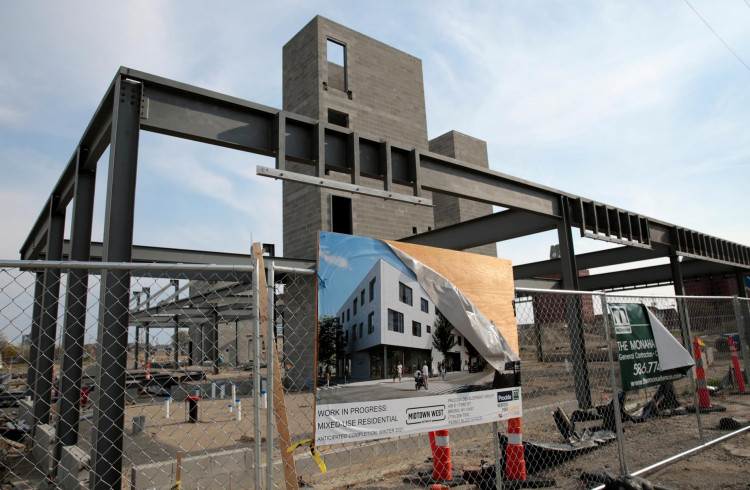The U.S. housing market, after enduring a chilly winter due to high interest rates last year, is showing significant signs of recovery.
The latest housing market index released on Tuesday showed a rebound in the U.S. housing market at a rate much higher than expected. Single-family new builds hit a more than 30-year high, and building permits for future projects are also on the rise, indicating that the worst slump may be over.
In May, new home starts in the U.S. bounced back beyond expectations, jumping 21.7% month-on-month, significantly higher than the expected 0.1% decrease and a 2.2% increase from the previous value, hitting the highest since April 2022.
After seasonal adjustments, the number of new home starts in May was 1.631 million, up from 1.34 million in April. The increase of 291,000 units marks the largest increase since January 1990.
A regional breakdown showed that the number of new home starts in the southern, midwestern, and western parts of the U.S. grew by double digits, while the northeast saw a near 19% decrease.
The number of single-family home starts increased by 18.5%, and multi-family home starts of five units or more increased by 28.1%.
Moreover, the National Association of Home Builders/Wells Fargo index rose five points to 55, marking six consecutive months of increases and the first time it has risen above the 50 midpoint since July 2022. The index has rebounded 77% since December of last year.
According to Robert Dietz, chief economist at NAHB, with builder sentiment gradually rising since the beginning of the year, a bottom is being formed for single-family home construction. The Federal Reserve nearing the end of its tightening cycle is good news for future market conditions, and the cost of financing mortgage loans and loans for builders and developers is expected to improve.
However, not everyone is convinced that the surge in U.S. new home starts in May clearly represents a recovery in the housing market. Some analysts point out that the interest rate hike cycle is not over yet, and the credit environment is still in the process of tightening. This could make it difficult for builders, who are heavily reliant on construction and development loans, to keep up with the rebound in May over the next few months.
Analysts at Nationwide, a U.S. home insurance service provider, believe that despite the typically high volatility of new home start data and potential downward adjustments in the coming months, the large increase indicates builders are broadly expanding their businesses this summer.
Meanwhile, the average rate for a 30-year fixed mortgage in the U.S. has fallen from over 7% last November. According to data from the Mortgage Bankers Association, the average rate was 6.77% last week.
Since March 2022, the Fed has raised interest rates by 500 basis points. This month, the Fed paused rate hikes to assess the effects of its actions so far. However, due to the continued high inflation rate, the Fed may resume rate hikes next month.
Most Fed officials believe that it is necessary to raise interest rates by another 25 basis points one to two times. As a result, companies in interest rate-sensitive sectors like housing are showing an upward trend.
Federal Reserve Chairman Jerome Powell will testify before Congress on Wednesday and Thursday. Some investment banks expect him to continue sending hawkish signals. According to a report before the hearing, inflation in key parts of the service industry remains high and shows no signs of easing.
Strong housing market data pushed gold prices lower, with spot gold losing the key 1942 position on the 100-day moving average at one point.
U.S. stocks fell for two days, with the Dow falling over 380 points during the session and briefly losing the 34,000 point mark, and the S&P 500 Index fell as much as 1% and lost the 4,400 point mark.






